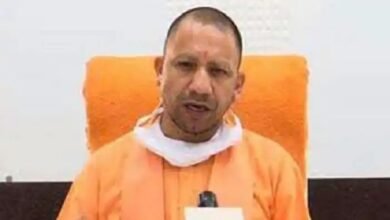[ad_1]

Egg Side Effects: अंडे का ज्यादा सेवन नुकसानदायक हो सकता है.
Side Effects of Eating Eggs: सर्दियों की शुरूआत हो गई है और ऐसे में हर कोई ऐसी चीजों का सेवन करने की कोशिश करते हैं जो हमारे शरीर को अंदर से गर्म रखने में मदद कर सकें. इस लिस्ट में सबसे पहली चीज जो लोगों के दिमाग में सबसे पहले आती है वो है अंडा. सर्दियां शुरब होते ही लोग इसका सेवन ज्यादा मात्रा में करने लगते हैं. ये सेहत के लिए फायदेमंद होते हैं और शरीर को अंदर से गर्म रखने में भी मदद कर सकते हैं. लेकिन क्या आप जानते हैं कि इनका ज्यादा मात्रा में सेवन फायदे की जगह नुकसान भी पहुंचा सकता है. अगर आप भी ज्यादा मात्रा में अंडों का सेवन कर रहे हैं तो आप थोड़ा संभल जाएं. तो आइए जानते हैं कि किन लोगों को इसका सेवन करने से बचना चाहिए?
1. पाचन की समस्या
यह भी पढ़ें
कई लोगों को डाइजेशन की समस्या होती है, ऐसे में अंडे का सेवन उनके लिए दिक्कत बन सकता है. बता दें कि अंडा हैवी होता है और उसको डाइजेस्ट होने में समय लगता है. ऐसे में अगर आप ज्यादा अंडों का सेवन करते हैं तो ऐसा करने से गैस, बदहजमी की परेशानी हो सकती है. इसके साथ ही अंडे में प्रोटीन पाया जाता है जो गट हेल्थ को भी नुकसान पहुंचा सकता है. ऐसे में अगर आपको डाइजेशन की समस्या है तो आपको अंडों का सेवन सीमित मात्रा में करना चाहिए.
2. बैड कोलेस्ट्रॉल
शरीर में बढ़ा हुई बैड कोलेस्ट्रॉल आपको कई बीमारियों का शिकार बना सकता है. बढ़ा हुआ कोलेस्ट्रॉल ब्रेन स्ट्रोक और हार्ट अटैक का खतरा बढ़ा सकता है. ऐसे में बैड कोलेस्ट्रॉल को कंट्रोल करना बहुत जरूरी होता है. अगर आपको पहले से ही हाई कोलेस्ट्रॉल की समस्या है, तो आपको अंडों का सेवन सीमित मात्रा में करना चाहिए.
ये भी पढ़ें: सर्दियों में रोज पी लीजिए ये चीजें, चेहरा पर दिखेगा अलग ही निखार और ड्राई स्किन नेचुरल तरीके से हो जाएगी कोमल
3. हार्ट
अगर आप हार्ट से जुड़ी बीमारियों से परेशान हैं या जूझ रहे हैं तो आपको अपनी डाइट में अंडों का सेवन सीमित मात्रा में करना चाहिए. इनका ज्यादा सेवन आपके हार्ट पर जोर डाल सकता है. इसलिए निश्चित मात्रा में ही इनका सेवन करें.
4 . डायरिया
डायरिया यानी पेट खराब होने पर भी अंडों का सेवन सोच समझकर करना चाहिए. अंडे की तासीर गर्म होती है, जिस वजह से इसका सेवन करने से दस्त की समस्या बढ़ सकती है.
5. एलर्जी
कई लोगों को प्रोटीन के ज्यादा सेवन से एलर्जी हो जाती है, ऐसे लोगों को भी अंडों का सेवन सीमित मात्रा में करना चाहिए. अंडे में प्रोटीन पाया जाता है. इसका ज्यादा सेवन एलर्जी को बढ़ा सकता है.
(अस्वीकरण: सलाह सहित यह सामग्री केवल सामान्य जानकारी प्रदान करती है. यह किसी भी तरह से योग्य चिकित्सा राय का विकल्प नहीं है. अधिक जानकारी के लिए हमेशा किसी विशेषज्ञ या अपने चिकित्सक से परामर्श करें. एनडीटीवी इस जानकारी के लिए ज़िम्मेदारी का दावा नहीं करता है.)



